Garage Squad: Detroit-Area Corvair Faithful Offer Helping Hands
“A good friend of mine had a Corvair, and I’ve always wanted one,” explained Bill Anstine as he sat by his dark gray 1963 model. Driving it, however, is difficult. Anstine’s Corvair has a manual transmission; he uses a prosthetic since his leg was amputated below the knee. “I drove it before with the four-speed and it didn’t work out too well for me.”
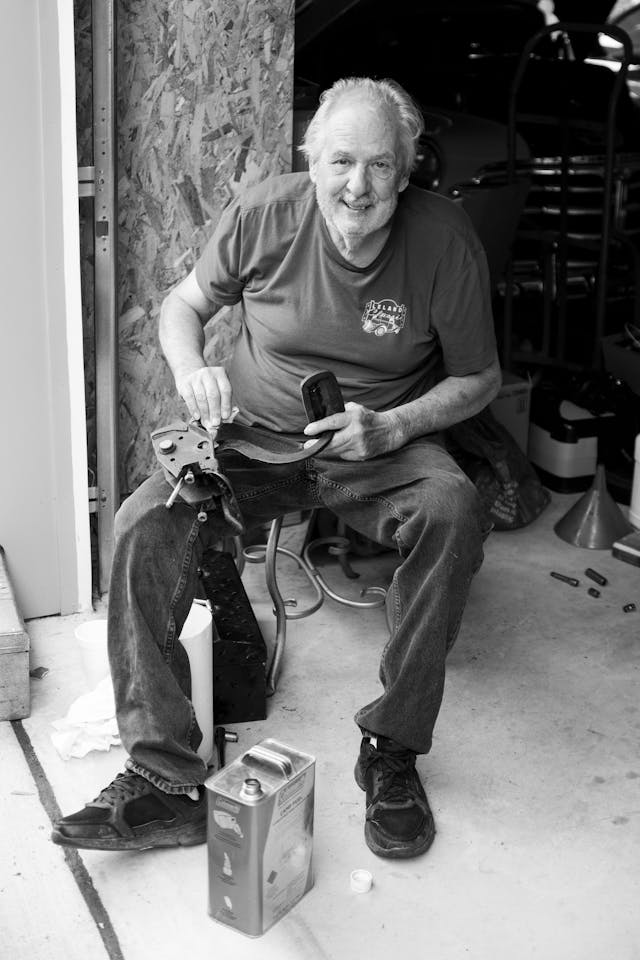
On an overcast summer morning, a group of six volunteers from the Detroit Area Corvair Club (DACC) gathered in Anstine’s expansive home garage in suburban Livonia, Michigan. The goal: Swap his Corvair’s four-speed manual for a Powerglide automatic.
A transmission conversion can seem like a daunting task, even to the Corvair initiated. There are a number of part differences between automatic and manual Corvairs (the transmission bellhousing, flexplate, and subframe, just to name a few). And, uh, you need to take the old transmission out and put the new one back in.
Luckily for Anstine, the volunteers in attendance, who call themselves the Garage Squad, have many years of experience and tomes of Corvair knowledge at the ready. Longtime club member Pete Koehler has been coordinating the group. “I’m retired and watch too much TV, and one of the shows I was watching was called Garage Squad. They went to people’s houses and they fixed cars up, and I thought, ‘Hey, that’s a cool idea.'” Kohler doesn’t remember exactly when the Garage Squad started, but the club’s Facebook page first mentioned it in 2017. Since then, the Squad has helped dozens of Detroit-area Corvair owners repair their cars.

The engine in the back of Koehler’s pickup truck looked like it was home to a mouse nest for the better part of five decades. He had purchased the heap for cheap, hoping it could either be nursed back to life or salvaged for parts. Attached to the crusty, air-cooled flat-six was the flexplate (a metal disc that connects the engine to an automatic’s torque converter) needed to swap the transmission. It was quickly determined that the engine was not worth saving; even with the help of penetrating oil in the cylinders and a big breaker bar, the mill would not turn over.
“If the only tool you have is a hammer, you tend to see every problem as a nail.”—Abraham Maslow
Because the engine was seized, only one of the bolts attaching the flexplate to the torque converter could be reached through the access port on the transmission bellhousing. And, annoyingly, the bellhousing couldn’t be removed until the converter and flexplate were out. Club member Ian Smith seemed to take glee in breaking the brittle aluminum bellhousing, bashing it with a hammer. Elegant, no. Effective, yes.
As work commenced, so flowed the jokes and war stories from previous Garage Squad events. The club’s ethos reflects its values—perfectly correct grease marks and bolt coatings don’t matter compared with keeping Corvairs on the road and getting more people interested in the hobby. Koehler chalks this attitude up to the accessibility and variety of Chevy’s rear-engined nameplate. In period, the model lineup ranged from convertibles to pickups, and 1.8 million Corvairs were produced during its ten-year run between 1960 and 1969—most coming from the Willow Run Assembly Plant in nearby Ypsilanti, Michigan.
Despite Ralph Nader’s infamous takedown of the model, Corvair enthusiasts (like our own Kyle Smith) have a deep and long-running affection for the car. The Detroit Area Corvair Club was established in 1974 by autocross junkies and GM employees, and there are several vendors with piles of parts to help keep these cars running and driving. The largest such outfit is in Massachusetts, known as Clark’s Corvair Parts. The place has been in business for 50 years.
“As the hobby grays, you’ve got to bring in some fresh people, some younger folks that want to participate, and that’s what Facebook has done for us,” said Koehler. Indeed, with the introduction of the DACC Facebook page (1000 followers) and Garage Squad events, more local young people have taken an interest in Chevy’s rear-engined vehicles. For example, Kassie, Anstine’s 18-year-old granddaughter, stopped by in her matte-black Corvair named Venom. With the help of the Garage Squad, Kassie has rebuilt Venom’s motor and swapped the transmission.
Over on Anstine’s Corvair, things were going well. There were no stuck or especially rusty fasteners, and the team’s experience removing drivelines certainly helped. Anstine’s son (and club president) Mike Anstine, Kerry Borgne, and Bob Wittmann were able to drop the engine and transmission in about the same time it took to free the flexplate from the crusty engine.
Lunch had arrived, putting a pause on work. (The one stipulation of receiving the Garage Squad’s help is that you pay for lunch. Donations to the Ypsilanti Automotive Heritage Museum as a form of payment are also encouraged.) “In the years we’ve been doing this, we’ve donated well over $10,000 to the museum to our efforts. And that’s helping to keep the doors open over there in Ypsilanti, especially during the COVID,” said Koehler.
After lunch, the team bolted up the automatic transmission and related parts to the engine, proceeding to then lift up the whole assembly up and into the car. The swap would have been finished that day (not bad for about six hours of work), but the parts needed to convert the Powerglide to a floor-shift mechanism rather than the factory column shift were not on hand.
Based on what we saw, the Garage Squad will be right back at it again once the weather warms up this spring. All in the name of helping fellow Corvair owners, wrenchers, and friends.
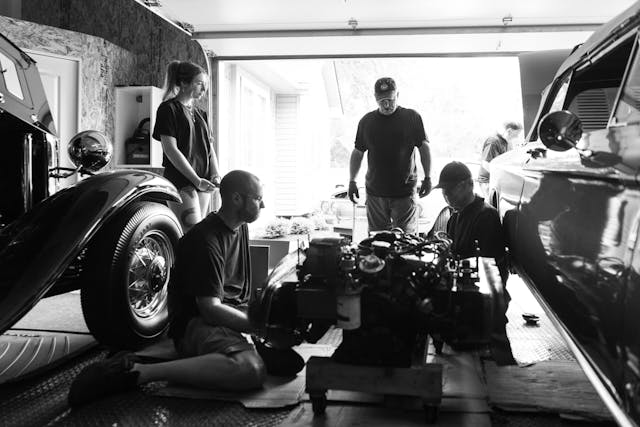

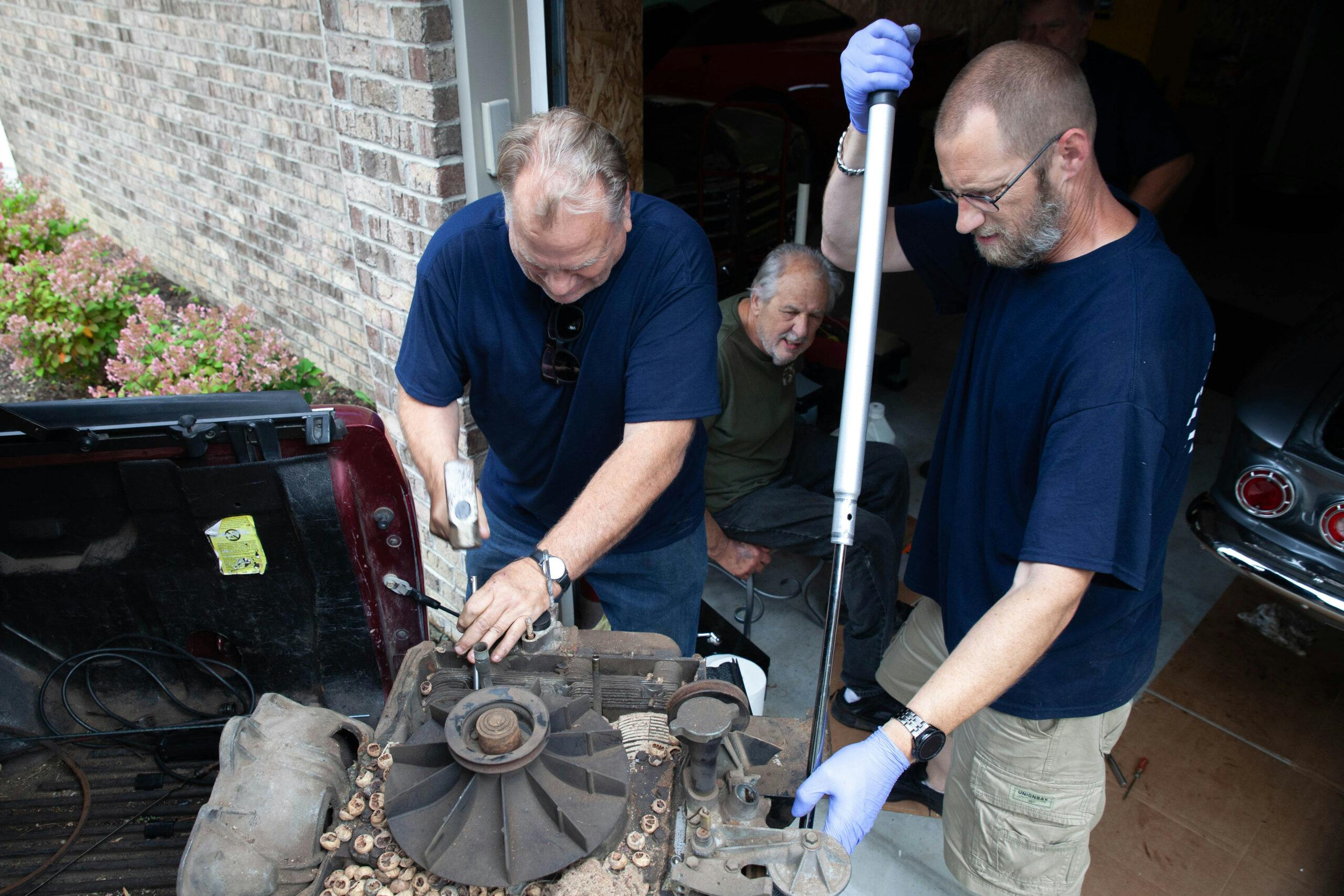
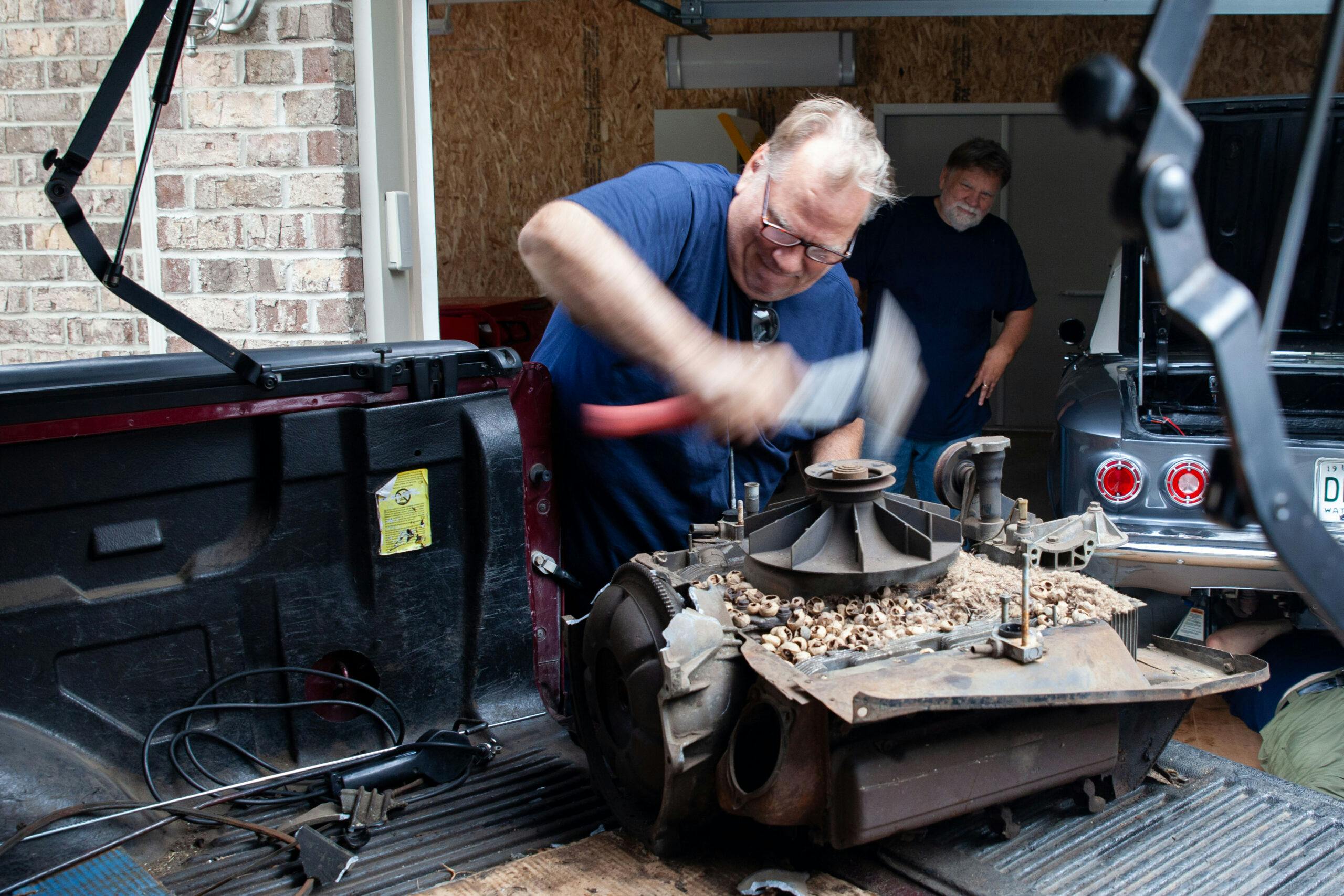
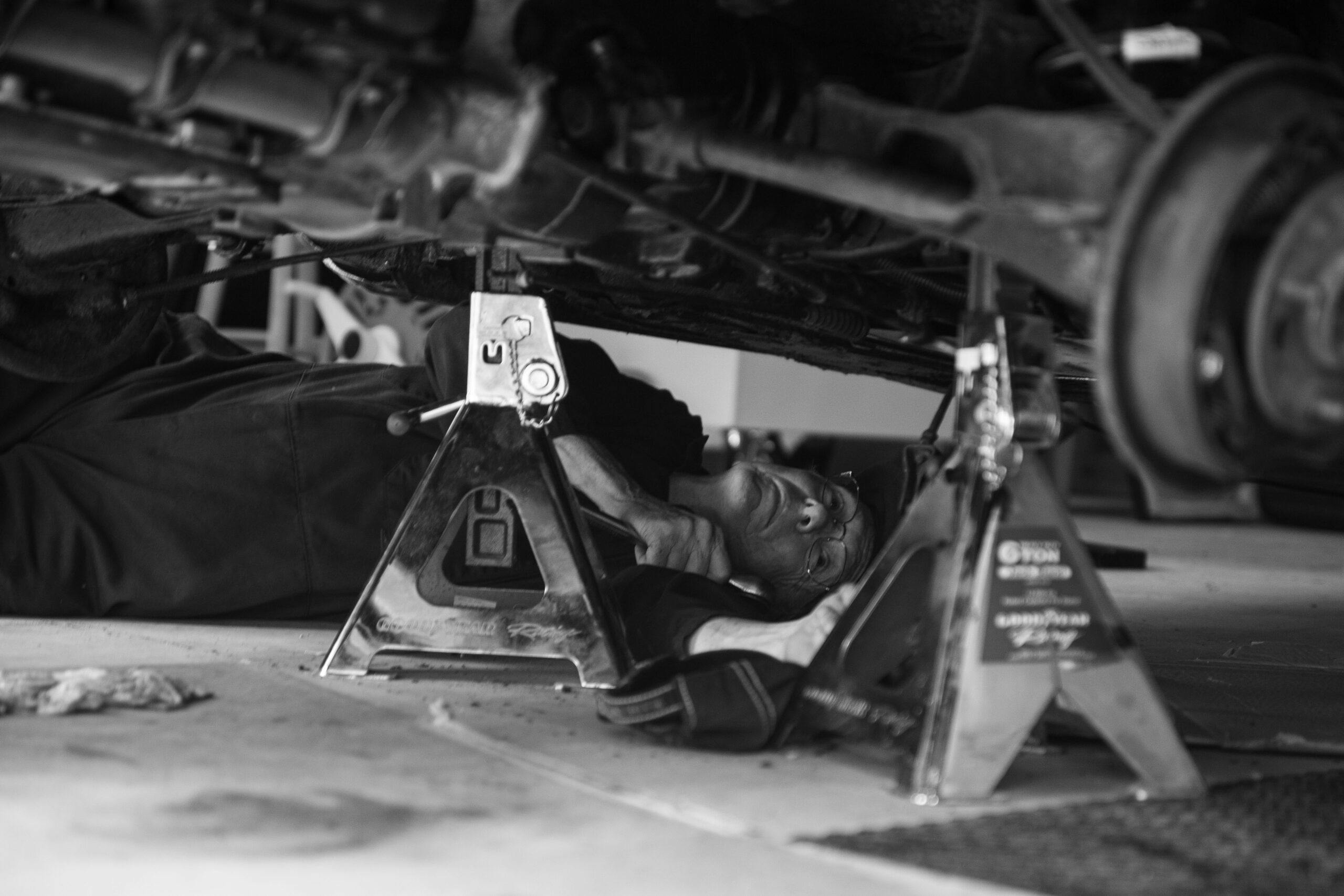
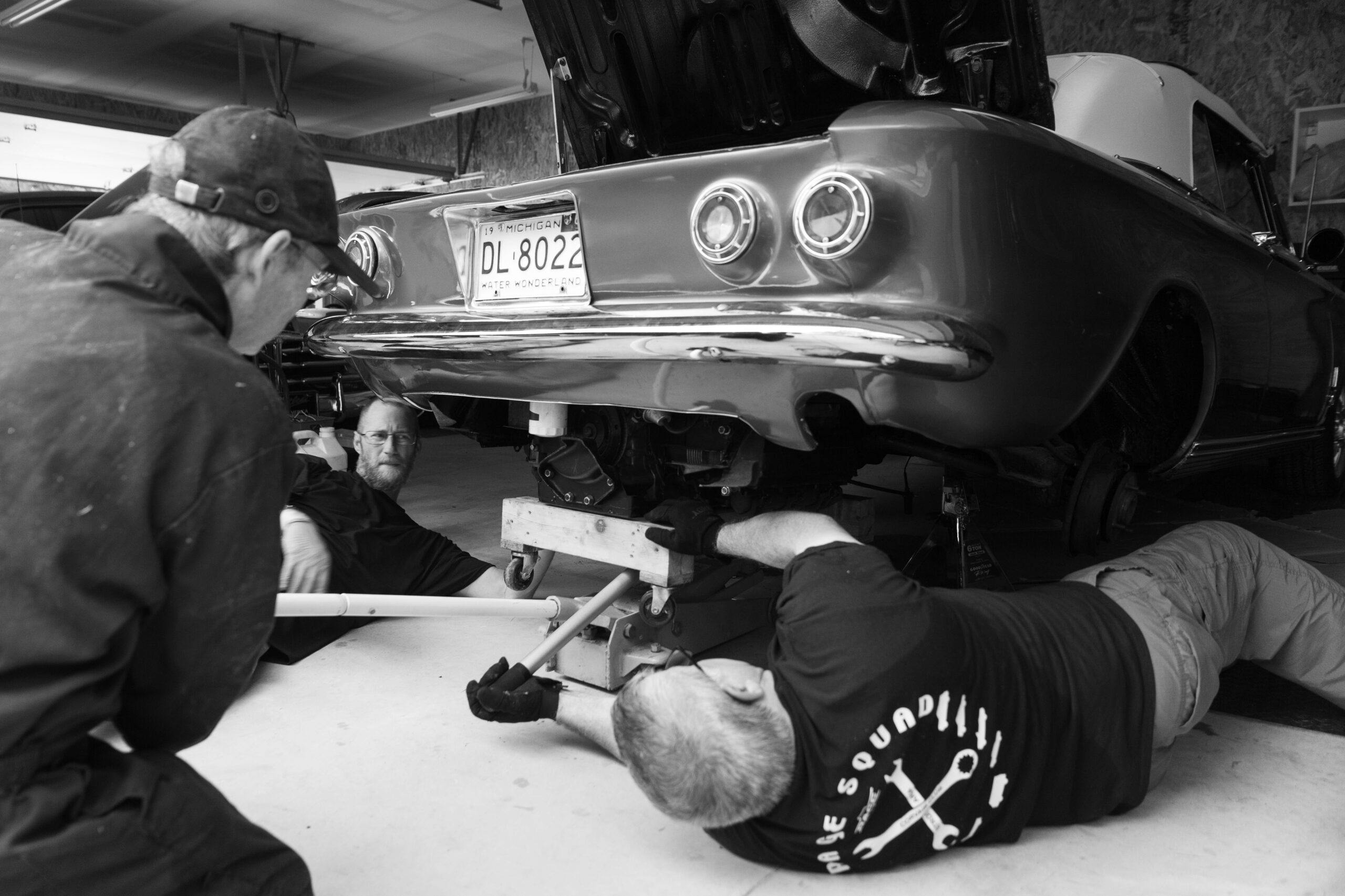

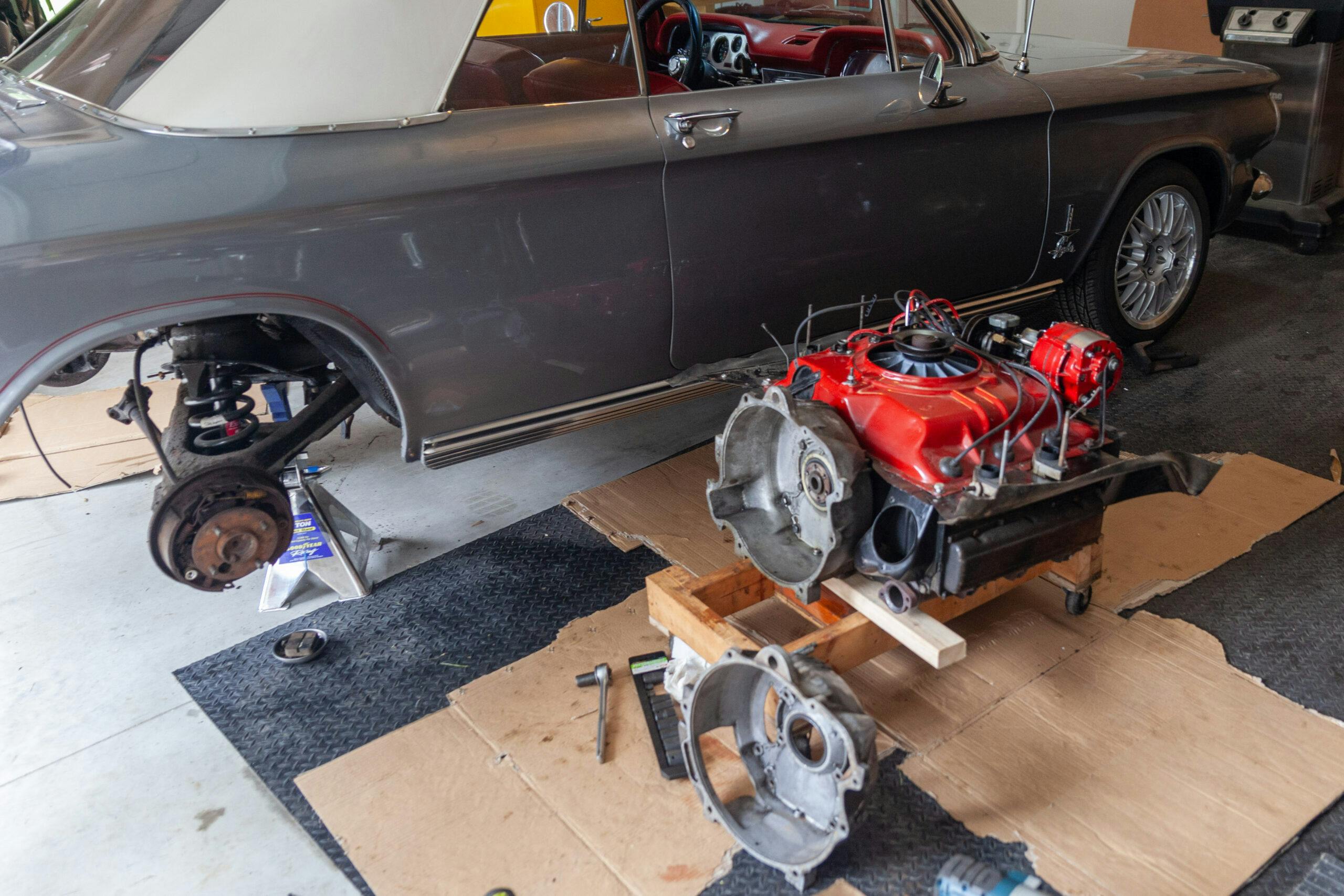

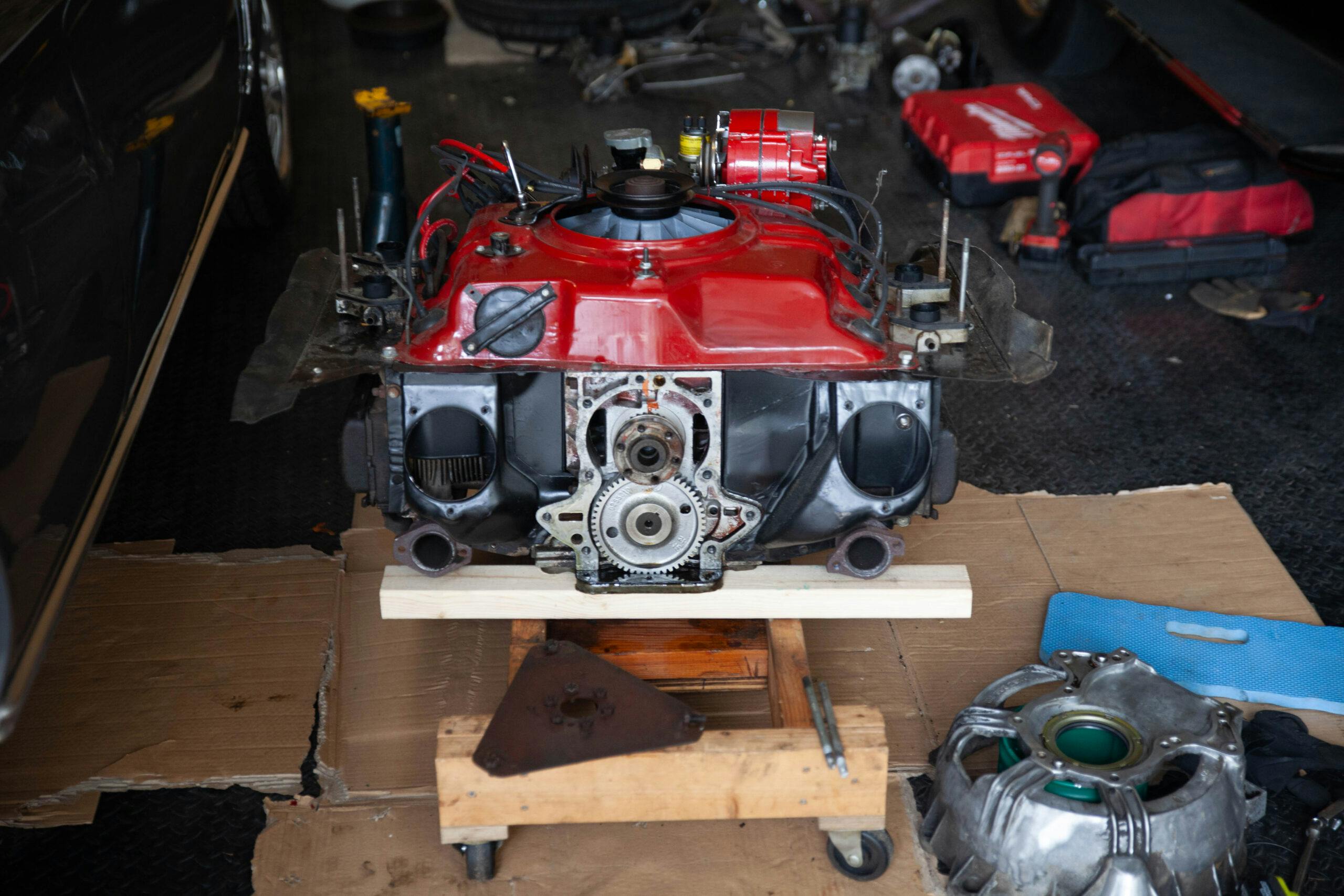
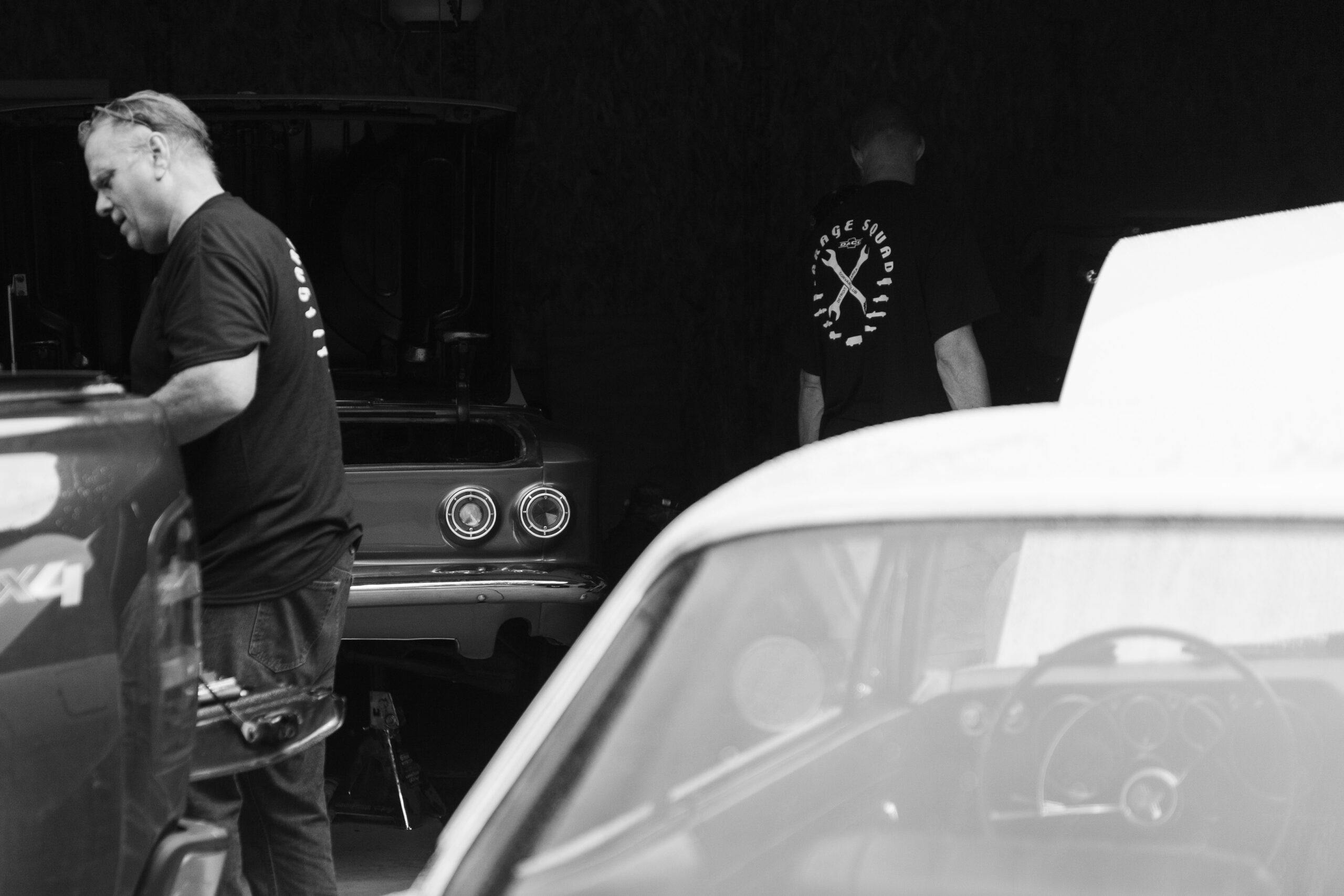
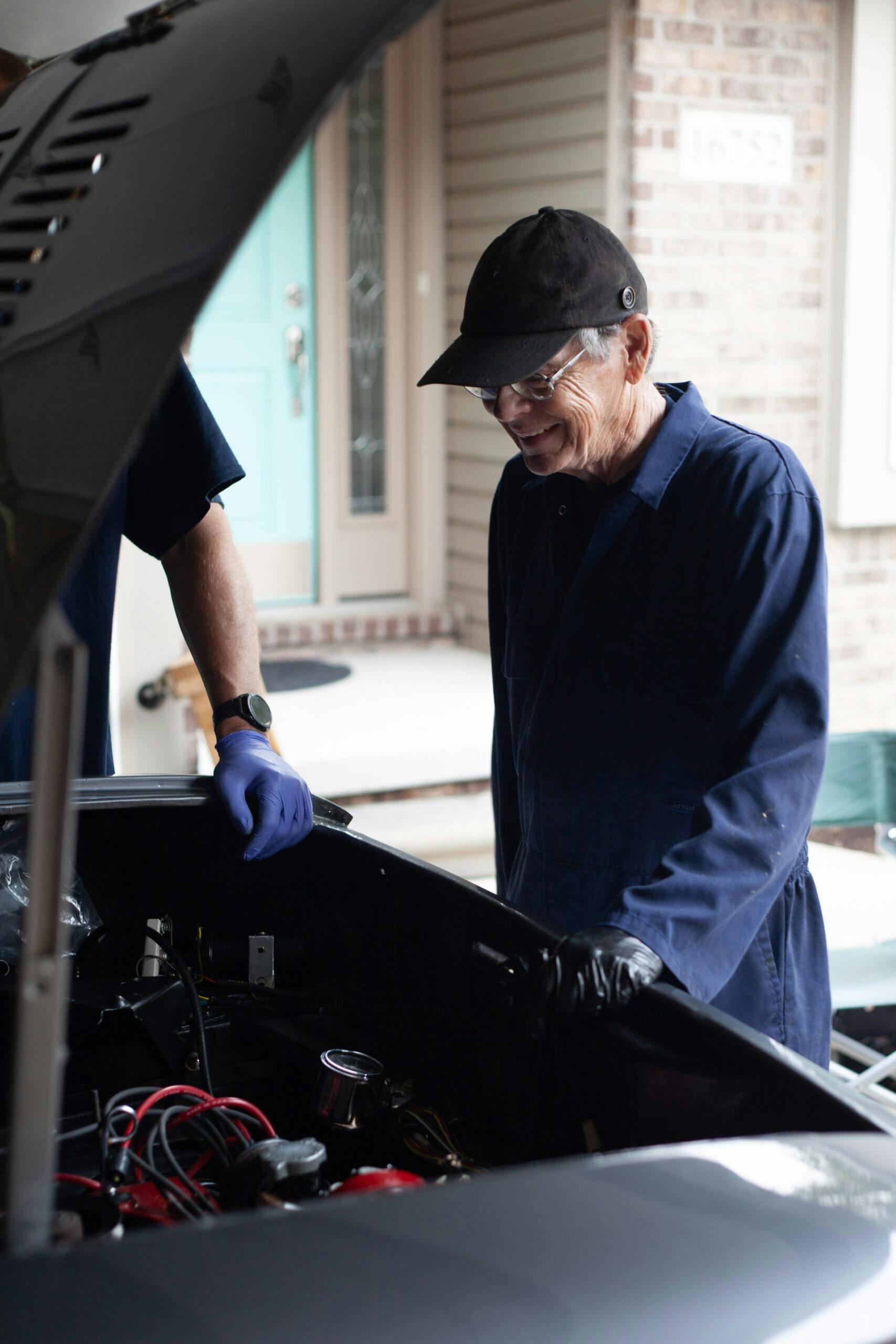
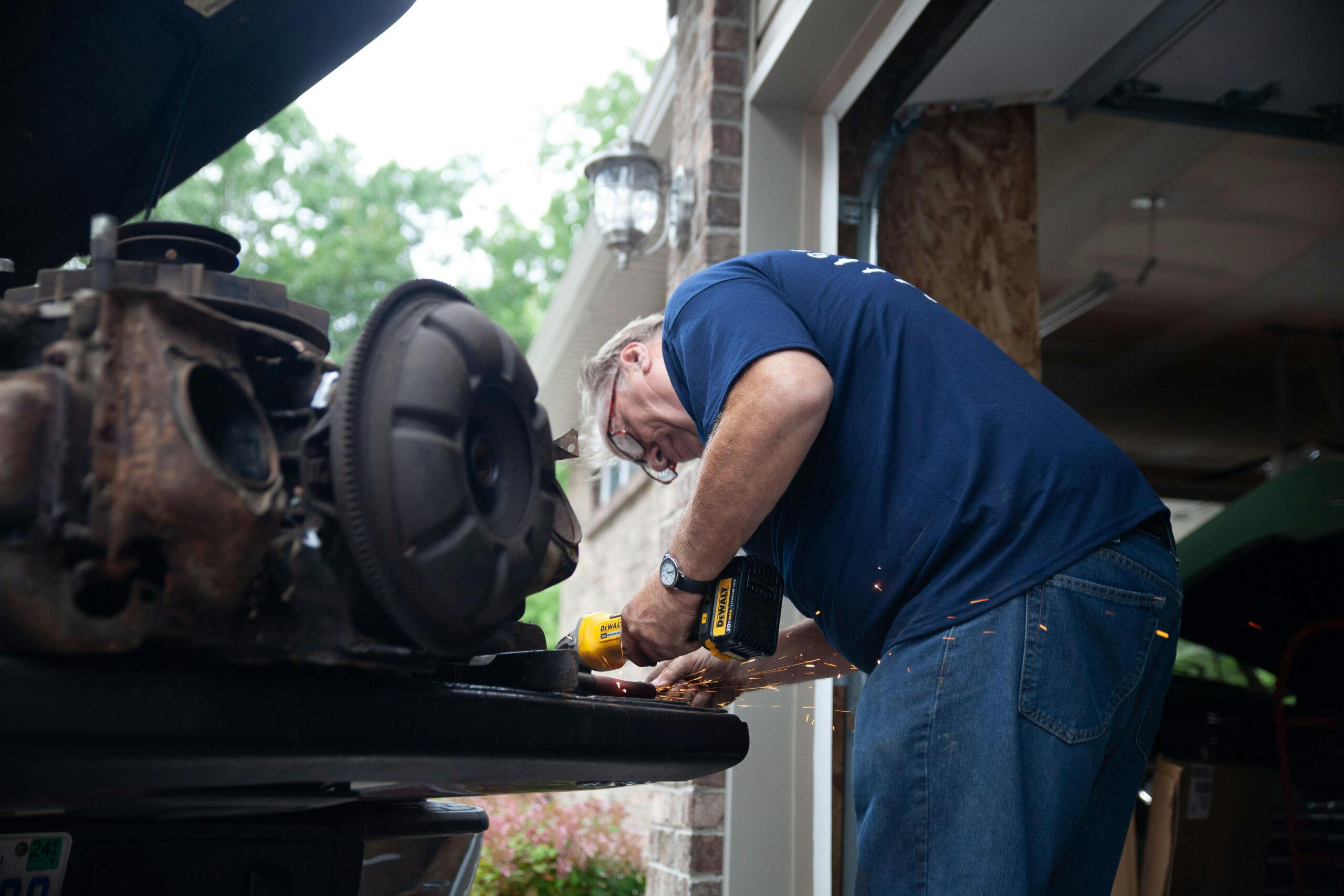


I love this! The car hobby will continue to flourish because of good people like the Garage Squad.
Local clubs are great for a vintage car owner. Years ago we joined a Classic Tri-5 Chevy club in our area. All good people. If anyone needed help, they would step up and provide knowledge or parts or the tools to help the other members.
I like watching what the Garage Squad folks do, but there is a basic premise to the show that has me scratching my head sometimes. This example excepted, in most cases, someone has a classic, runs into a snag, and it sits for 10 years. Garage Squad patches it up and gets it going again, but if these folks never figured out how to fit collecting into their life the first time, what will happen this time?
I would love to see a Garage Squad revisit show just to see what happened with some of these cars
Kudos to those guys: essentially making the world a better place, right ? That’s the way the enthusiast community should work. It’s also Good Times working with friends on cars…or pretty much anything, for that matter.
A cool idea. Nice to see younger people are getting involved too.
A great article. When I retired I wanted a “simple” old car to work on. After decades of fixing up old cars using shops and vendors to rebuild engines and transmission, re-cover the seats, etc. – I wanted to do it all. I bought a 66 Corvair, then a 4 door hardtop 66 “followed me home”. I did it all. Rebuilt the engines, re-upholstered the seats (seat covers made by Clark’s), rebuilt the suspension and brakes, did the body work. Yes it took a decade, but I meant a lot of helpful Corvair folks with invaluable information. The Corvair is a “fun” car, but different.
Now I repay the help I got by doing electrical repairs (that is my specialty) on Corvairs and I only ask for lunch. Last summer a younger gentleman, who drives his Corvair daily, asked me to help replace the generator in his 1963 Corvair with an alternator. He did all the mechanical work and I did all the wiring. It worked out great. Yes many folks don’t have the skills to keep an old car going, joining a club and making friends (buying free lunches helps) can allow someone with limited skills to enjoy their old car.
So that’s what that looks like! Back in the day, a friend told me that he was unable to get the starter to engage with the ring gear on his Powerglide equipped Corvair. Because the ring gear is unsupported at intervals, it can permanently deform to the extent that the pinion gear will skip when trying to engage. This only happens if the engine has been shut off with the ring gear in the wrong position.
This can’t happen on manual trans cars, because the ring gear is supported for the entire circumference of the flywheel.
HAS ANY NOTICED THAT THE TRAVERSE/GMC, OR WHATEVER THEY CALL IT, TAIL LIGHT RESEMBLE OLDER CORVAIR TAIL LIGHTS? JUST SAY’N.
I’m in the Indy area and the Corvair hobby is doing well. Despite some local health department issues, I’ve been repairing as many Corvairs as I can out of my garage at home for over 40 years. I also lend a hand at as many vintage races with Corvairs/Stingers at them as I can too. There are a surprising number still out there being thrashed on track.
Fantastic group of gentleman whom I’m blessed to know.
“Factory Column Shift” ? How about Dash mounted Automatic shift lever ?
CorvairEd
That’s awesome. Love it.wish there was more community spirit